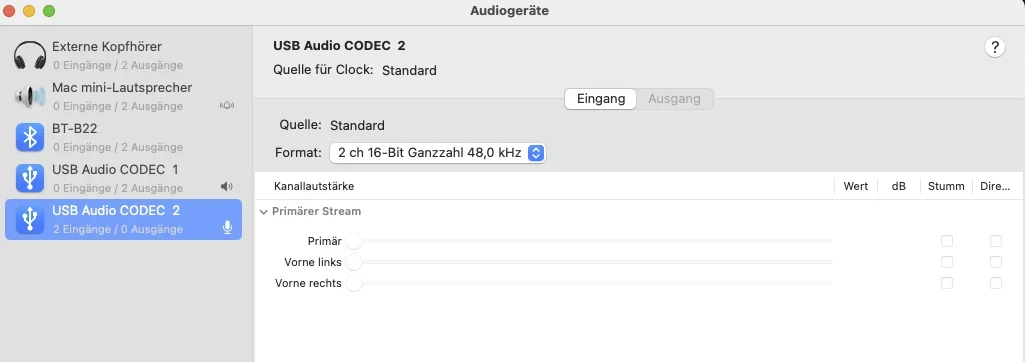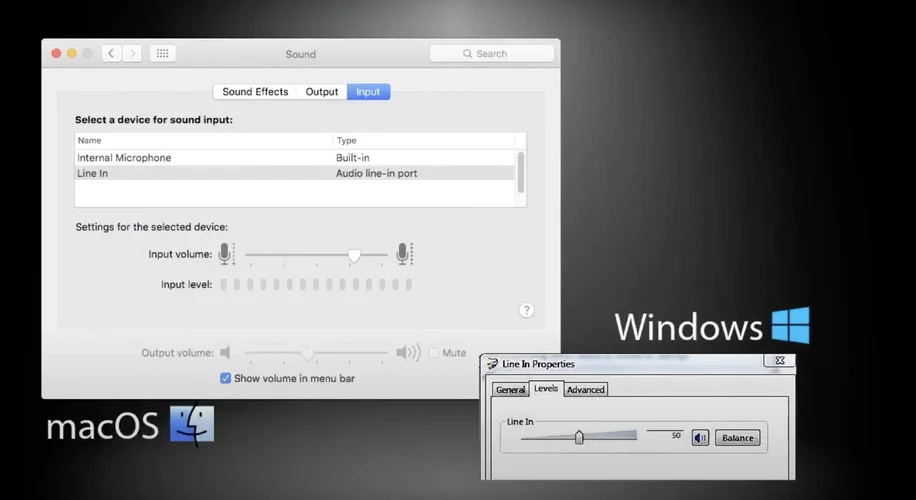robworld
AmbientRocker
Um ein Tapedeck mit Software (NAK T-100) zu kalibrieren muss ich die Eingangslautstärke reduzieren. Das ist standardmässig bei Ventura leider nicht möglich.
Gibt es ein Programm, bei dem die Eingangslautstärke von einem USB-Codec einstellen kann, ähnlich wie beim Mikro-Eingang?
Ich hab mir dafür extra die Behringer UCA 202 angeschafft, da der Entwickler diese auch nutzt. Aber bei den entspr. Einstellungen ist alles ausgegraut.
Bei Windows und früheren Mac-Versionen scheint dies ohne Probleme zu gehen: Aus dem Video vom Entwickler:

Gibt es ein Programm, bei dem die Eingangslautstärke von einem USB-Codec einstellen kann, ähnlich wie beim Mikro-Eingang?

Ich hab mir dafür extra die Behringer UCA 202 angeschafft, da der Entwickler diese auch nutzt. Aber bei den entspr. Einstellungen ist alles ausgegraut.
Bei Windows und früheren Mac-Versionen scheint dies ohne Probleme zu gehen: Aus dem Video vom Entwickler:
